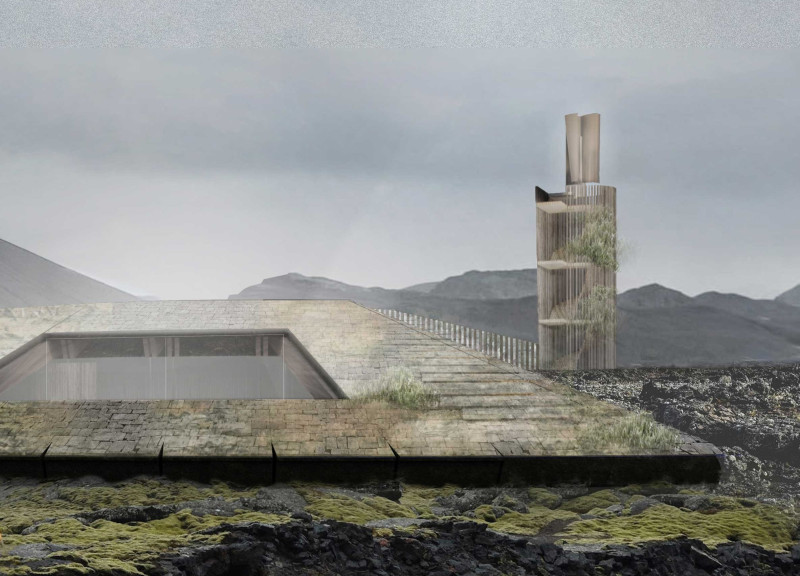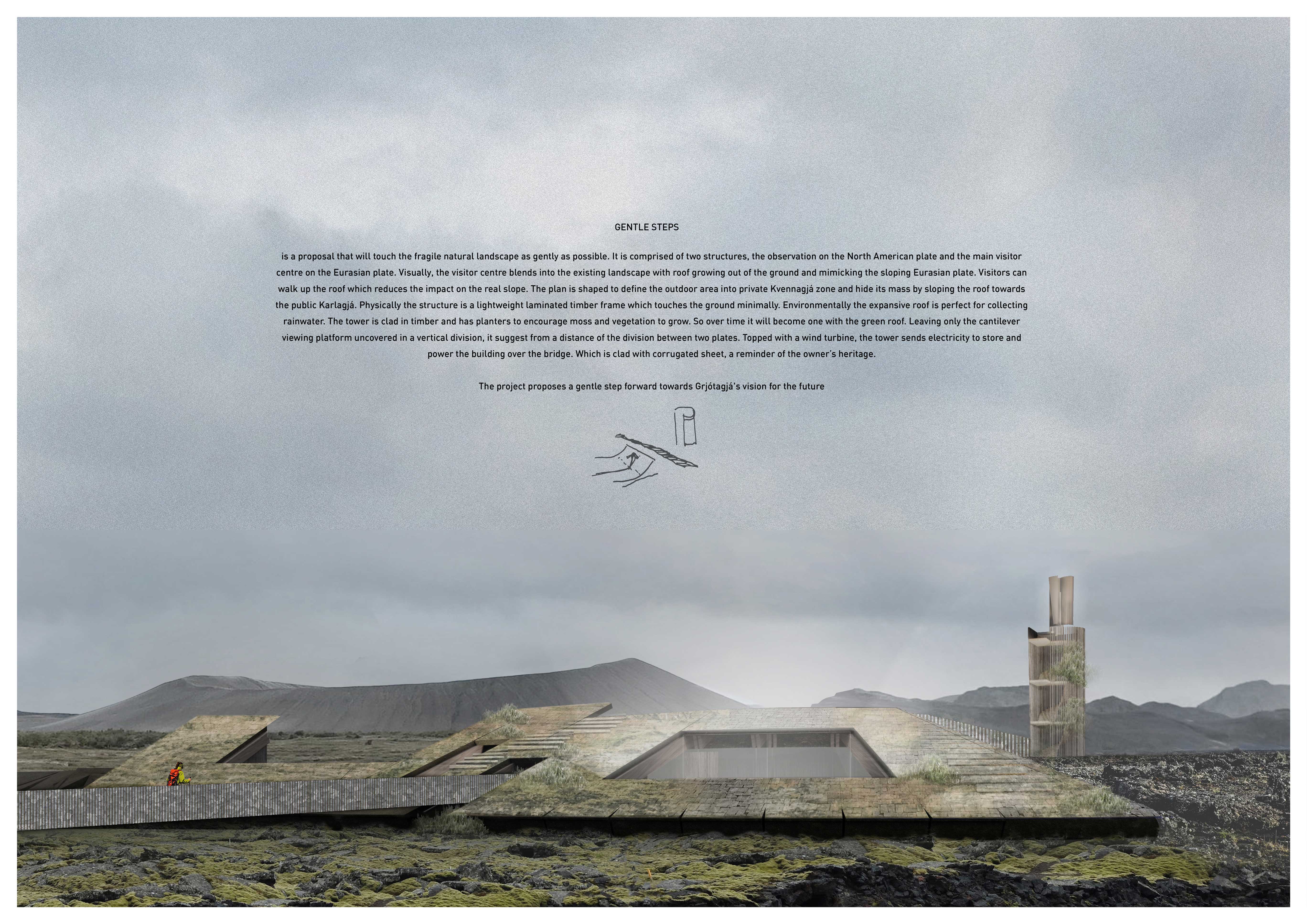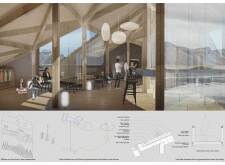5 key facts about this project
GENTLE STEPS is a proposal that integrates smoothly into the delicate landscape of Grjótagjá, focusing on the area's unique geological features. It consists of two main structures: an observation area located on the North American tectonic plate and a visitor center situated on the Eurasian plate. The design aims to create a connection between the natural environment and built forms, providing spaces for exploration and engagement with nature.
Architecture Concept
The concept centers on merging the buildings with the land. The roof of the visitor center appears to rise from the ground, mirroring the slope of the Eurasian plate. This design choice helps reduce ecological impact while allowing visitors to walk on the roof. This interaction enhances their connection to the landscape and architecture.
Spatial Organization
The layout differentiates between private and public spaces. The private Kvennagjá zone offers a quiet area for reflection, while the public Karlagjá zone encourages interactions among visitors. The sloping roof design conceals the mass of the building, allowing for views that draw attention to the environment. The spatial arrangement promotes a variety of experiences and ways to engage with the site.
Sustainability Features
Sustainability plays an important role in the design. The large roof serves as both a gathering space and a system for collecting rainwater. A notable feature of the design is the tower topped with a wind turbine, which generates renewable energy. This focus on environmental responsibility supports the project's vision of coexisting with nature.
Materials and Specific Details
The construction uses a lightweight laminated timber frame that minimizes its footprint on the ground. Timber cladding covers the tower, promoting the growth of moss and vegetation over time. The bridge is finished with corrugated sheet material, connecting various elements while acknowledging the cultural context of the region.
The design’s flow, marked by sloped roofs and natural materials, creates a straightforward connection between the architecture and the landscape, reinforcing the project's ties to its environment.





















































